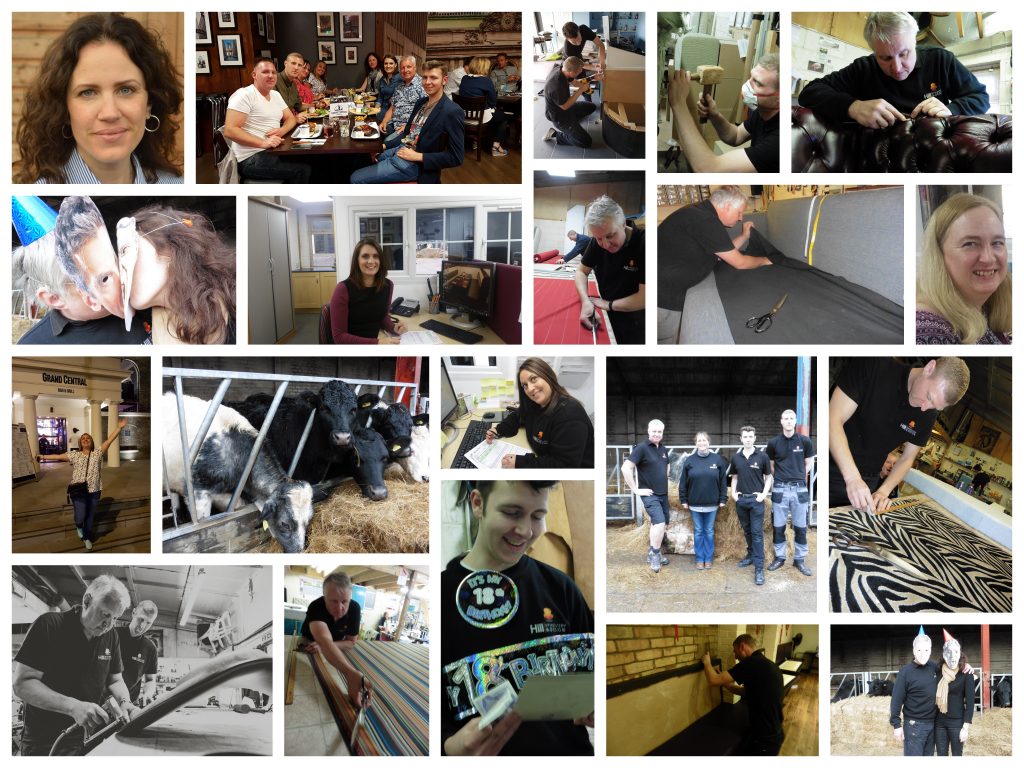The Best Cleaning Tips for Fabric and Leather Banquette Seating
Banquette seating is an elegant and practical addition to any space, offering both functionality and aesthetic appeal. Whether in a cozy breakfast nook at home or a bustling restaurant, banquette seating creates a comfortable and stylish environment for dining, working, or relaxing. However, like any furniture, maintaining its appearance and ensuring longevity requires regular care and cleaning. This is particularly true for upholstered banquette seating, where spills, stains, and general wear can quickly diminish its beauty.
Here we’ll explore the best cleaning tips for both fabric and leather banquette seating to help keep your furniture looking pristine for years to come.
Cleaning Tips for Fabric Banquette Seating
Fabric upholstery is a popular choice for banquette seating because of its comfort and versatility. However, fabric can be prone to stains, dust accumulation, and discolouration over time. Here’s how to clean and maintain it effectively:
Regular Vacuuming
Dust, crumbs, and pet hair can accumulate on fabric upholstery, especially in dining areas. Use a vacuum with a brush attachment to gently remove debris from the surface of the seating. Pay special attention to seams and crevices where dirt tends to collect. Vacuuming at least once a week can prevent dirt from becoming embedded in the fibres.
Spot Cleaning Spills Immediately
Accidental spills are inevitable, especially on dining banquettes. The key is to address them promptly. Use a clean, white cloth to blot (not rub) the spill to absorb as much liquid as possible. Rubbing can push the liquid deeper into the fabric fibres. After blotting, use a mild fabric cleaner or a mixture of warm water and a small amount of dish soap to gently clean the area. Rinse with a damp cloth and let the fabric air dry.
Deep Cleaning with Fabric Upholstery Cleaner
For a more thorough clean, use a fabric upholstery cleaner or a steam cleaner designed for upholstery. Always test the cleaner on a small, inconspicuous area first to ensure it doesn’t cause discolouration. Follow the manufacturer’s instructions carefully, and allow the seating to dry completely before use.
Dealing with Odours
Fabric seating can sometimes absorb odours from food, pets, or smoke. Sprinkle baking soda over the surface and let it sit for 15-20 minutes before vacuuming it off. For persistent odors, use an upholstery-safe odour eliminator spray.
Preventing Stains with Fabric Protectors
Applying a fabric protector spray, such as Scotchgard, can provide an invisible barrier that repels liquids and stains. This is particularly useful in households with kids or pets. Reapply the protector every six months or after deep cleaning.
Sunlight Protection
Prolonged exposure to direct sunlight can cause fabric colours to fade. If your banquette seating is near a window, use curtains, blinds, or UV-blocking window films to minimise sun damage.
Cleaning Tips for Leather Banquette Seating
Leather is a durable and luxurious material that adds a touch of sophistication to any space. While it’s generally easier to clean than fabric, leather requires its own set of care techniques to maintain its natural beauty and prevent cracking or discolouration.
Dust and Wipe Regularly
Dust and debris can dull the finish of leather over time. Use a soft, dry cloth to dust the surface of your leather banquette seating at least once a week. For a more thorough clean, wipe it down with a slightly damp cloth, ensuring that no water pools on the surface.
Address Spills Quickly
Like fabric, leather is vulnerable to spills. Blot liquid spills immediately with a dry, clean cloth to prevent staining. For greasy or oily spills, sprinkle a small amount of talcum powder or cornstarch on the area, let it sit for a few hours to absorb the oil, and then gently brush it off.
Use a Leather Cleaner
Occasionally, clean your leather banquette with a specialised leather cleaner. Apply it sparingly with a soft cloth, following the manufacturer’s instructions. Avoid using harsh cleaners or abrasive tools, as they can damage the leather.
Condition the Leather
Leather can dry out over time, leading to cracks and stiffness. To keep it supple and hydrated, use a leather conditioner every 3-6 months. Choose a high-quality product that’s compatible with your type of leather. Apply it in a circular motion with a soft cloth and buff off any excess with a dry cloth.
Protect from Sunlight and Heat
Direct sunlight and heat can cause leather to fade, dry out, or crack. Position your seating away from windows or use window treatments to reduce sun exposure. Avoid placing leather banquettes near heat sources like radiators or fireplaces.
Dealing with Scratches
Minor scratches on leather can be treated with a leather repair kit or a small amount of leather conditioner. For deeper scratches or tears, consult a professional upholsterer for repair.
Avoid DIY Cleaning Products
Homemade remedies like vinegar or baking soda can strip leather of its natural oils, causing more harm than good. Stick to products specifically formulated for leather care.
General Tips for Both Fabric and Leather Banquette Seating
Establish a Cleaning Routine
Regular maintenance is the best way to preserve the appearance of your banquette seating. Develop a cleaning schedule that includes weekly vacuuming or dusting, monthly spot cleaning, and periodic deep cleaning.
Use Slipcovers for Extra Protection
If your banquette seating is in a high-traffic area, consider using removable slipcovers to protect the upholstery. These can be easily cleaned or replaced as needed.
Invest in Professional Cleaning Services
For stubborn stains or deep-set dirt, professional upholstery cleaning services can work wonders. These experts have the tools and knowledge to clean delicate materials without causing damage.
Teach Proper Usage
If you have children or guests frequently using the banquette, educate them on treating the furniture with care. Simple habits like using coasters, avoiding eating messy foods, and not placing sharp objects on the seating can significantly extend its lifespan.
Conclusion
Upholstered banquette seating is a wonderful investment that enhances both the functionality and style of a space. With proper care and regular cleaning, you can keep your seating looking fresh and inviting for years to come. Whether you have fabric or leather upholstery, following these cleaning tips will help you maintain its beauty and durability while protecting it from everyday wear and tear.
Remember, the key to maintaining your banquette seating is consistency. Regular cleaning, quick attention to spills, and periodic deep cleaning will prevent dirt and stains from becoming permanent. By incorporating these practices into your routine, you’ll ensure that your banquette seating remains a beloved centrepiece in your home or business for many years to come.
For more information on Banquette Seating contact Hill Upholstery.




